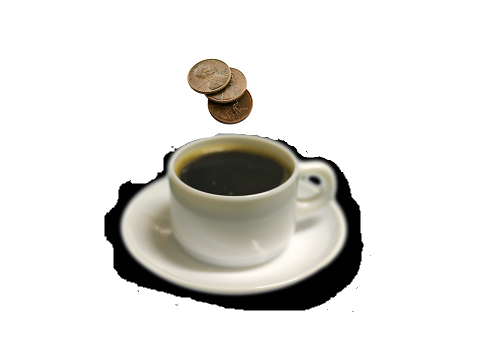Are you one of the many who vowed to take control of your finances in 2014? But what do you really mean?
If “take control of your finances” means reducing debt, then here are 3 steps to follow:
1- Total all your debts – credit card, student loan, mortgage, car loan, etc. If that total amount is too daunting, then focus on one item on your list (e.g., credit card debt).
2- Determine the amount you want that debt to be by December. Let’s say you have $10,000 in credit card debt and you want it to be $0 by December. The total debt amount you want to pay off by the end of December is $10,000.
3- Take the debt amount you want to pay and divide by 12. Using the same example, $10,000 divided by 12 amounts to $833.33. That’s the amount you’ll need to pay each month to reduce your debt to $0 by December. Is that amount realistic? If not, then change the debt amount you want to pay. Instead of reducing by $10,000, target reducing by $6,000 – it calculates to $500 per month.
You’ve now defined “take control of your finances” – to reduce your $10,000 credit card debt to $4,000 by paying $500 per month (or $6,000 total) on the account. It may sound elementary, but many people fail to “take control of finances” because they never clearly define what they want to accomplish. Write this statement and tape it to your wallet or credit card.
So where do you find the money to pay off your targeted debt amount? Unfortunately, there’s no magic. There’s no secret investment. You’ll need to either reduce spending or find a second income stream (e.g., weekend employment, freelance work). Some people may need to do both.
If you choose to reduce spending, first focus in these three categories:
Food (groceries, dining out, coffee shops, etc.)
Personal care items (salons, clothing, cosmetic, dry cleaning, etc.)
Entertainment (movies, concerts, e-reading, vacations, etc.)
Most people intuitively know how they spend their money. You probably have a good idea where you can reduce spending. Now make it happen.
In today’s world of technology, there is no reason NOT to know how much you spend. If you have a smart phone, find an app to track your spending – but only focus on specific items – your weak areas. If you know you spend over $100 per month at coffee shops and can easily spend less, then track that spending. Many people over-complicate by tracking too many categories. Focus on your weak areas.
If you don’t have a smart phone, then use prepaid cards (i.e., gift cards). If you want to reduce your coffee shop spending from $100 per month to $50 per month, then buy a gift card with that amount. If you prefer cash, then put $50 in an envelope labeled “coffee shop.” Restrict your spending by using only the prepaid card or cash in envelope.
Don’t let 2014 be another year you didn’t take control of your finances. Dig deeper. Be specific. Only then will you know if you’ve taken control of your finances.
ABOUT THE AUTHOR:
![]() Niv Persaud, CFP®, CDFA™, CRPC®, is the Founder of Transition Planning & Guidance, LLC. Her firm bridges the gap between financial planning and coaching. As a Transition Consultant, she offers sage advice in all aspects of life – financial, personal and professional. Niv does not manage money and does not sell financial products. Her services include spending plan development, divorce financial review, life strategy and professional progression. Niv actively gives back to her community through her volunteer efforts. She believes in living life to the fullest by cherishing friendships, enjoying the beauty of nature and laughing often — even at herself. Her favorite quote is by Erma Bombeck, “When I stand before God at the end of my life, I would hope that I would not have a single bit of talent left and could say ‘I used everything you gave me’.”
Niv Persaud, CFP®, CDFA™, CRPC®, is the Founder of Transition Planning & Guidance, LLC. Her firm bridges the gap between financial planning and coaching. As a Transition Consultant, she offers sage advice in all aspects of life – financial, personal and professional. Niv does not manage money and does not sell financial products. Her services include spending plan development, divorce financial review, life strategy and professional progression. Niv actively gives back to her community through her volunteer efforts. She believes in living life to the fullest by cherishing friendships, enjoying the beauty of nature and laughing often — even at herself. Her favorite quote is by Erma Bombeck, “When I stand before God at the end of my life, I would hope that I would not have a single bit of talent left and could say ‘I used everything you gave me’.”

